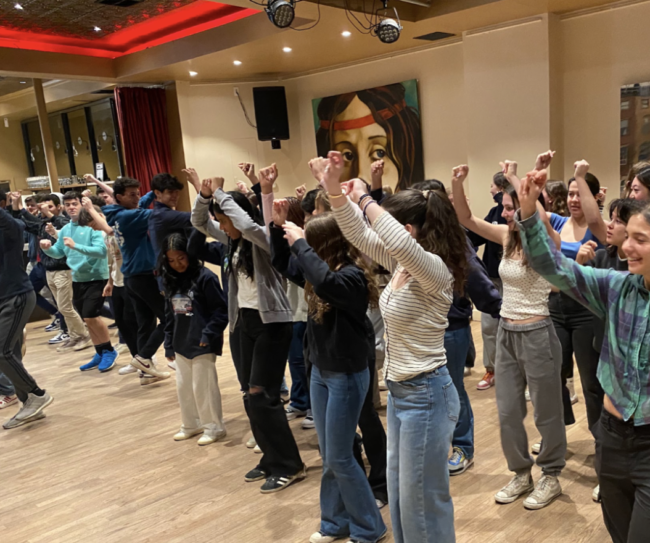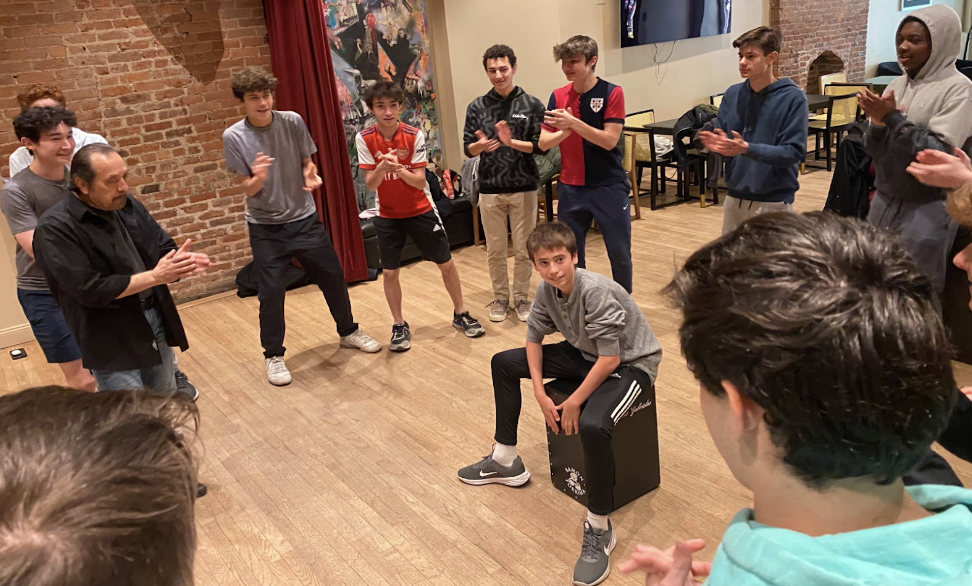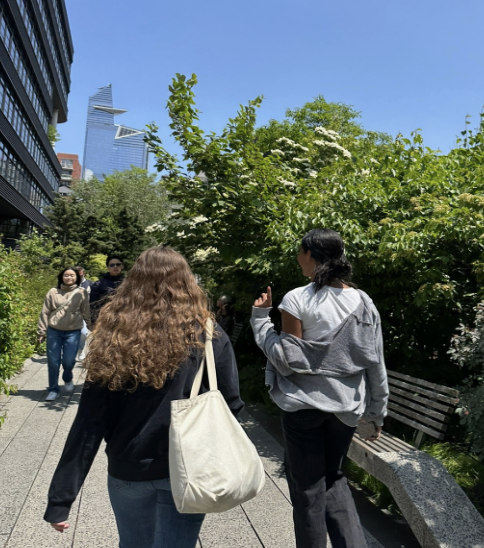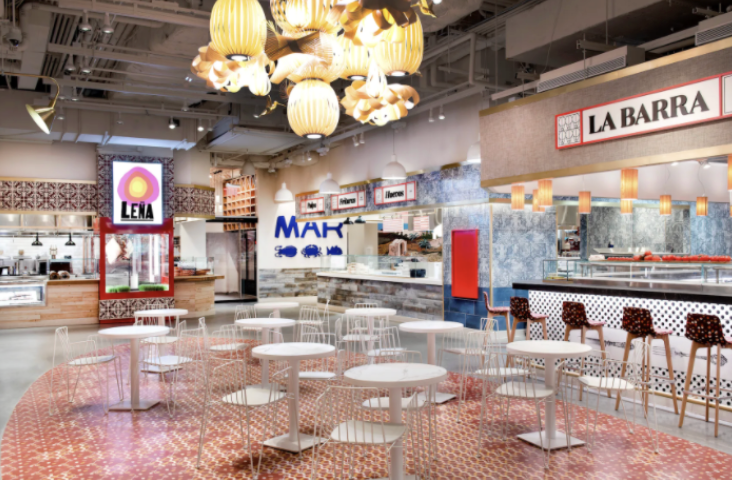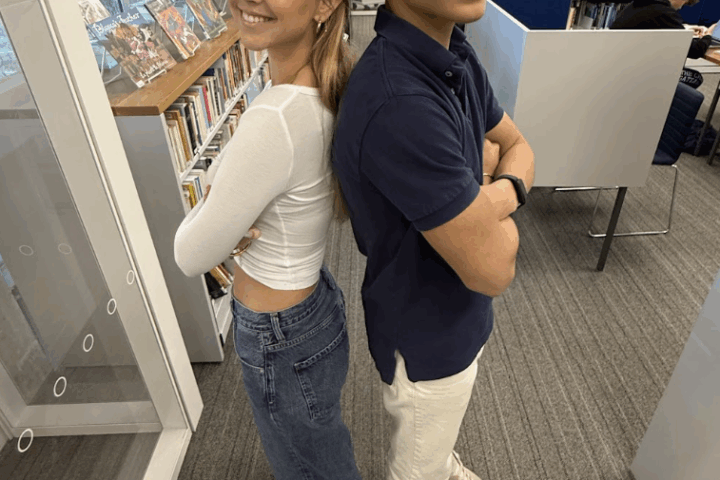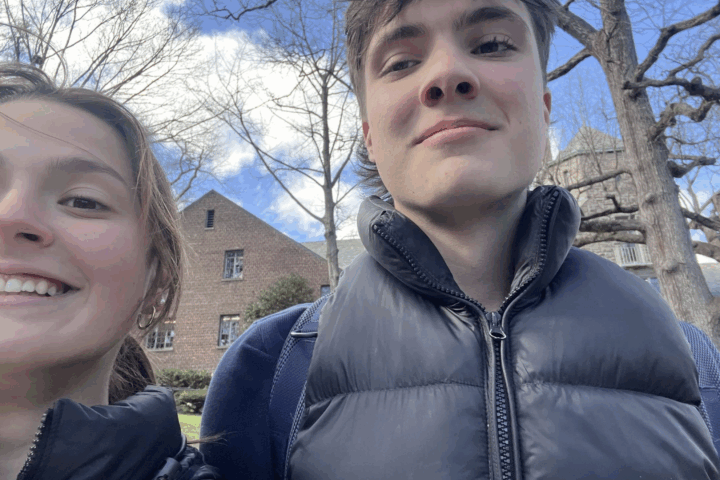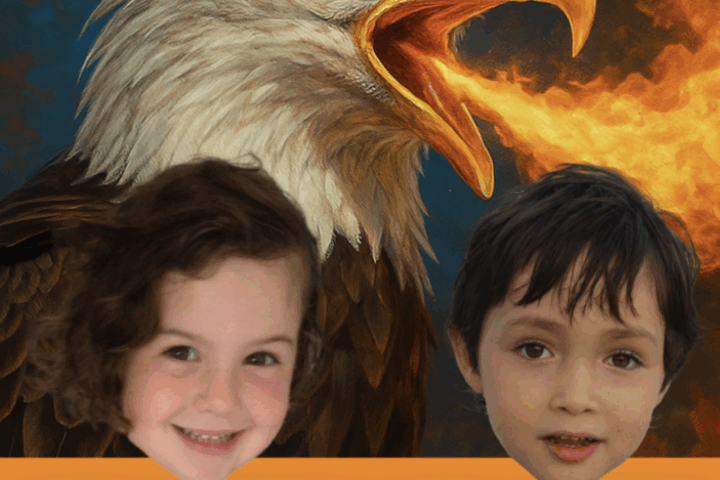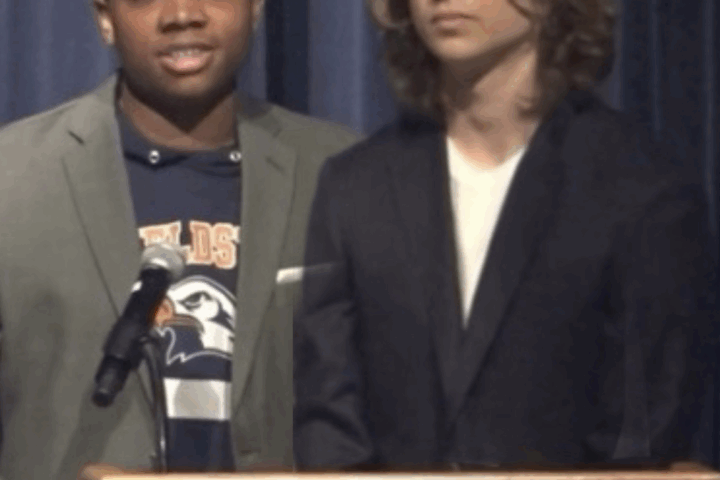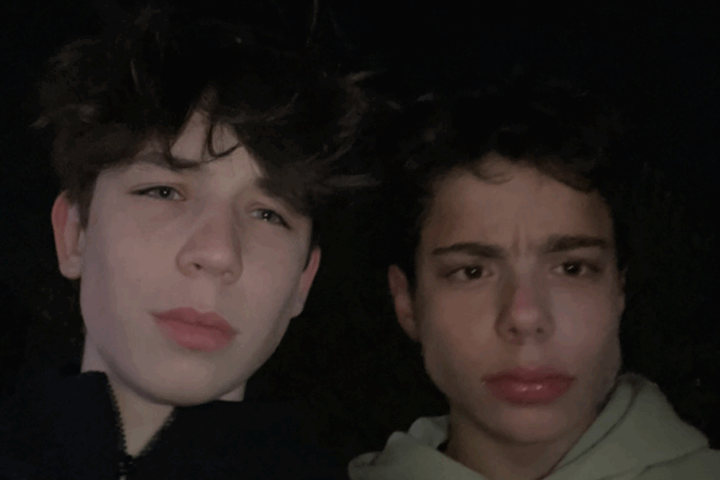Disclaimer: This article is the first installment of “From the Archives,” bringing previously unpublished news to the Fieldston community. In this article, Saskia Sommer fondly reflects on her favorite field trip from the 2022-2023 school year. All form numbers and titles are in the context of the 2022-2023 school year.
A hand’s twist, a foot’s stomp and the concentration of a face intent on nailing the movements that accompany an ever-evolving beat. To some, these descriptors could characterize any ordinary dance class. For the intensive Spanish classes of forms III and IV, they are emblems of a day spent learning Flamenco.
Flamenco, an artistic form of expression, is a dance style with beginnings in Spain’s southern autonomous region of Andalusia. The medium is unique for its combination of music and dance as well as passion and rebellion. Flamenco is typically thought of as epitomizing desperation, love, sorrow and joy through specific steps and motions. Still, its intricacies are most evident in the dance’s connotation for Spain. Spanish elites historically frowned upon Flamenco for its origin among Andalusian Romani groups and its effect on foreign perceptions of Spain. In an attempt to subvert Spain’s power, Flamenco was globally considered a testament to the country much to the dismay of church leaders and politicians who likened the dance to immodesty and counterculture.
Following the Spanish Civil War, Flamenco performances were intentionally scarce and folk music became the object of the Catholic Church’s agenda to reframe Spain in the eyes of the world. The Church intended to leave Flamenco and all it represented in the past. Still, the need for economic support was dire. Appealing to the world’s fascination with Flamenco, Spanish leaders employed the dance as a mode of attracting tourism throughout the 1960s. In fact, Flamenco was largely responsible for the nation’s period of exorbitant economic growth presently known as “El Milagro Español” (The Spanish Miracle). Though the dance has been exploited for the benefit of financial powerhouses, it has also become a celebration of its Romani, Arab, Christian and Jewish influences.
Typically a combination of three elements: cante (song), baile (dance) and guitarra (guitar) or other instruments, Flamenco is a means of storytelling within the parameters of doubt, sensuality, agony and identity. It is the expression of a convoluted journey through centuries of Roma and Spaniard history and an impressive spectacle all the while. Flamenco academies exist around the world but are especially concentrated in Spain, Mexico and Japan. Through a program of La Nacional: the Spanish Benevolent Society, Fieldston’s intensive Spanish students attended a Flamenco class located at the intersection of Greenwich Village, Chelsea and the Meatpacking District.
Source: Charo Beltrán
The trip to La Nacional was something intensive Spanish teachers Esperanza Caño and Charo Beltrán had carefully planned and considered. In conversation, Caño remarked, “Sra. Beltrán and I are both from Spain and decided that we would love to share our culture with our students. We recently heard about this program that La Nacional has- La Nacional is a Spanish benevolent society that Sra. Beltran and I belong to and it is a very important place in the history of Spaniards who immigrated to New York. Having it there was very special and we wanted everyone to have a great time, learn something and feel like they understood the culture a little bit more.”
And so everybody did. Clusters of students visibly refreshed from the extra hour of sleep the trip permitted joined peers on the steps of La Nacional. Once everyone had filed into the space, an open dance floor set forth a startling realization: as opposed to observing Flamenco dance, we would learn it ourselves. Excited to embark on the experience, two groups of individuals with drastically varied levels of coordination got taught the traditional “male” and “female” roles of the dance. Though some were quicker to pick up the choreography than others, all thoroughly enjoyed the opportunity to learn. After all, the expectation was not that one afternoon would produce a generation of professional Flamenco dancers. Rather, the hope was that all students could immerse themselves in an aspect of Spanish culture through learning the dance style.
In tune with that same hope, Form III student Sophia Thompson shared, “I loved being able to learn something that is so different from what we would be able to learn in school and have a great experience with my friends.” Friendship was a pervasive theme of the class as students vied in playful dance offs and helped one another remember choreography steps. As the Flamenco lesson came to a close, field trip attendees with a newfound passion for dancing stepped outside to find a sunny day. The perfect day for a perfect walk.
Source: Saskia Sommer
Glee could not be contained as students ventured across the High Line reflecting fondly on all that their Flamenco lesson had encompassed. All the more, an exhilarating destination lay ahead: Mercado Little Spain.
Connected to Hudson Yards, Mercado Little Spain is “a veritable love letter to Spain,” as the market’s website details. Traditional Spanish food abound, students excitedly flocked to kiosks serving everything from paella al plato to jamón to churros and pasteles. The trip to the market felt intentional as it served as a gustatory avenue into Spain’s diverse cultural atmosphere. Given the freedom to explore familiar tastes like that of grilled cheese and also dishes many had not tried before, students expressed an immense desire to return to the market.
Despite its relatively recent 2019 opening, the eatery has already received immense critical acclaim. It secured the number one spot on New York Times restaurant critic Pete Wells’ 2019 “Top 10 List of Best New Eateries.” Wells shares about the Spanish cuisine complex, “putting it in the No. 1 slot for the year isn’t a close call.” It is a holistic Spanish food destination of chef Jose Andres’ own design and a new favorite among Fieldston’s Spanish learners.
Regarding the decision to supplement the Flamenco class with a trip to Mercado Little Spain, Caño explained, “The idea of going to the restaurant afterwards worked out really well because it was a beautiful day walking on the High Line and everyone seemed to love the food and some people had never tried Spanish food before, so it was super fun to see their reaction. It was great; I’m super happy that we did it.”
Source: Mercado Little Spain
Overall, the trip emphasized the many forms of Spanish culture existing and thriving within New York.
Relating to this sentiment, Form IV student Marina Tassan-Solet shared, “As a city student, I loved being able to experience a few unique aspects of Hispanic cultural integration in my own neighborhood. I appreciated taking advantage of the incredibly diverse city around us to improve our Spanish speaking skills and enhance our general understanding of Latin culture! Learning traditional flamenco was a fun way to bond with our classmates as well as learn more about the dancers’ unique experiences and culture. I also enjoyed eating lunch at the Mercado of little Spain and experiencing some of Spain’s most iconic flavors.”
Tassan-Solet verbalized what a great majority thought: the trip was an exceptional way in which we, as learners, became students of Spanish culture and our surroundings as opposed to just the classroom. Through dancing, speaking, eating and exploring facets of Spain miles away in New York, we became tangibly connected to a place important to our teachers, New York City and to the world.

